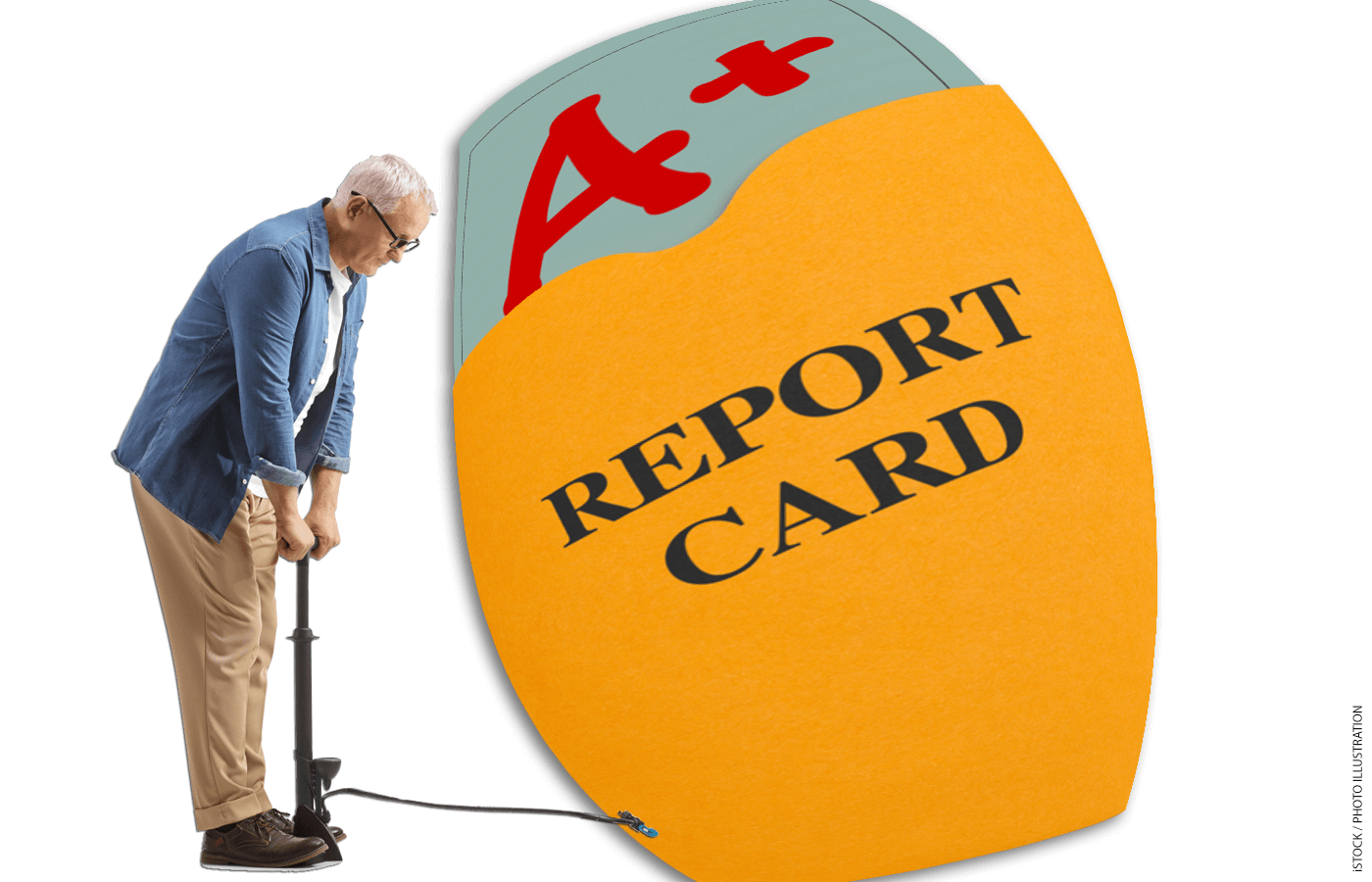
When I’m working with school leaders, we usually wind up spending a lot of time on the fact that “talk is cheap.” A principal can tell teachers how much she values their time, but if she starts staff meetings late or swamps them with trivial tasks, they won’t believe a word of it. Similarly, most adults who work in and around schools say they believe in excellence, responsibility, and rigor. And yet we’re sending a very different signal to students.
This fall, ACT released a new study tracking high school grades over the past decade—finding a dramatic bout of grade inflation, even as the National Assessment of Educational Progress showed steady declines in academic performance. The results should raise hard questions for those concerned about instructional rigor, sky-high graduation rates, and whether lenient grading policies adopted in the name of equity and student well-being deserve a closer look.
At this point, the evidence of grade inflation is incontrovertible. Between 2010 and 2022, student GPAs climbed markedly. According to the ACT study, the average adjusted GPA increased from 3.17 to 3.39 in English and from 3.02 to 3.32 in math. In 2022, more than 89 percent of high schoolers received an A or a B in math, English, social studies, and science. Moreover, the 2019 NAEP High School Transcript Study found that students were getting better grades than those a decade earlier but were learning less. In Los Angeles, the nation’s second largest school district, 83 percent of 6th graders received A, B, or C grades in spring 2022—even though just 27 percent met or exceeded the standards on state and national assessments.
Grade inflation isn’t a new phenomenon in American schooling. In 2009, Mark Schneider, now the director of the Institute of Education Sciences, found that, even as the share of students finishing Algebra 2 grew by a third between 1978 and 2000 and math GPAs rose, assessed high school math performance actually fell between 1978 and 2008.
Increasingly impressive transcripts and rising grades have yielded less actual student learning. How can that be? It’s because course titles and grades are cheap. What matters is not the grades students get or the labels of the courses they take but what is actually taught. And here is where it has been far too easy to slouch into Horace’s Compromise, famously described by Ted Sizer: “The agreement between teacher and students to exhibit a façade of orderly purposefulness is a conspiracy for the least, the least hassle for anyone.”
Just the other week, in an essay that offered a damning portrayal of the student-level consequences of easy grading and missing rigor, Teach Like a Champion author Doug Lemov offered a related observation: “A sort of tacit collusion emerges: when almost everyone gets what they want, the school becomes easier to run. Teachers are happy because no one calls them to argue about grades, and kids aren’t competitive and pushy.”
Harvey Mansfield, the iconic Harvard political philosopher, has traced the roots of grade inflation to social and cultural shifts that started in the late 1960s. (Decades ago, Mansfield became known for his practice of giving students two sets of grades: one that reflected Mansfield’s own assessment of the students’ performance and another “based on the system of Harvard’s inflated grades.”)
Today, polling has found that 44 percent of educators say that students today often ask for better grades than they’ve earned. Four out of 5 educators say they’ve given into the demands of pushy students or helicopter parents, partly because so many report having been harassed by students and parents over grades.
The insidious thing is how easy grade inflation is for everyone involved. Meanwhile, advocates with loud voices have sought to make all of this newly respectable, using the fashionable language of “equitable grading” to push schools to eliminate zeroes, end graded homework, drop penalties for late work and missed assignments, and offer endless retests. The upshot is to teach students that deadlines are optional and consequences aren’t real.
For teachers squeezed between helicopter parents and anti-grading ideologues, it can be tough to hold the line on high expectations. Educational leaders need to stand up for rigor, and they need to support classroom teachers who are committed to putting that into practice. And this means there’s an important role for states when it comes to providing honest assessments on student learning and ensuring that graduates have mastered essential knowledge and skills.
After all, there are real, unfortunate consequences to giving nearly every student an A or a B. Such grades tell students it’s OK to coast, give parents a false sense of how their kids are doing, and allow students to graduate without essential knowledge or skills. Worst of all, it teaches students that we don’t mean our big talk about hard work and excellence. That lesson’s not good for anyone.
Frederick Hess is director of education policy studies at the American Enterprise Institute and an executive editor of Education Next.
This post originally appeared on Rick Hess Straight Up.


